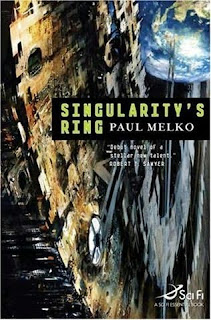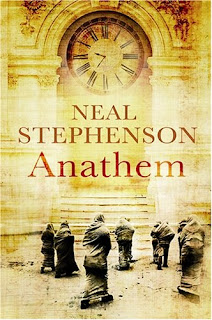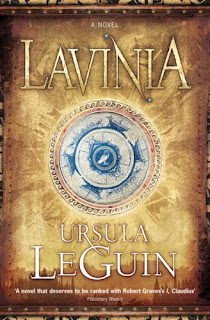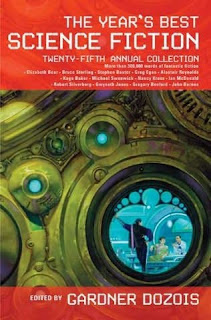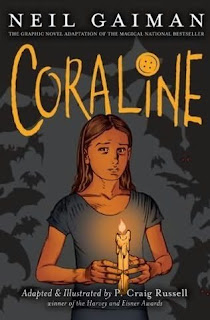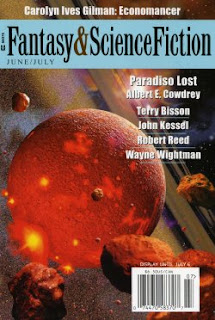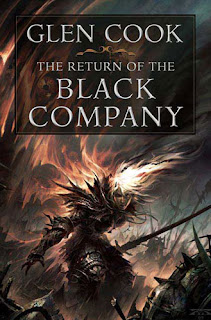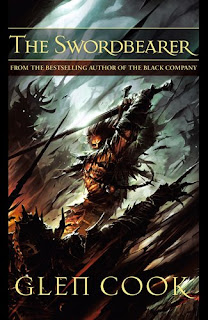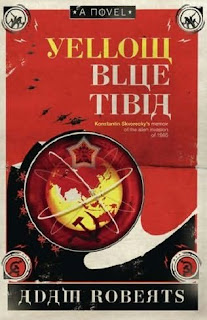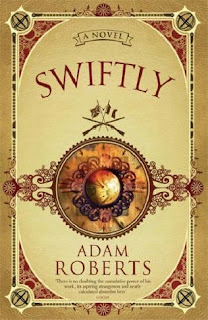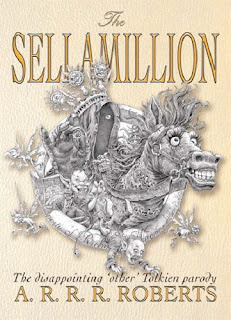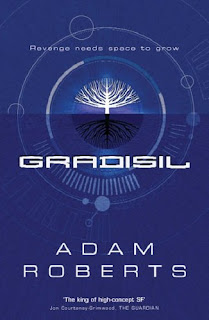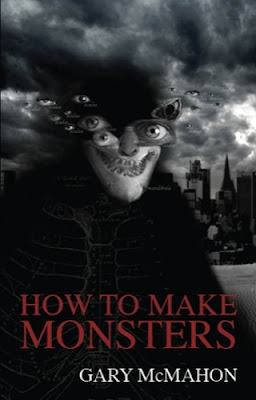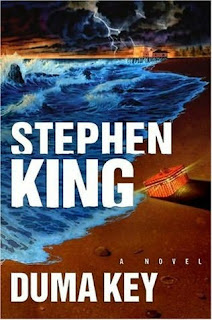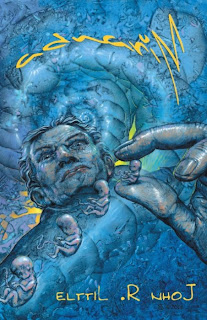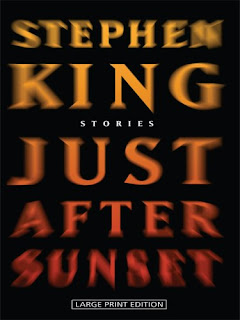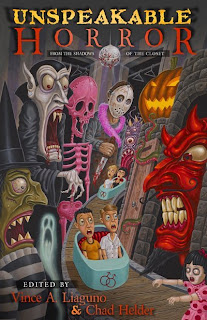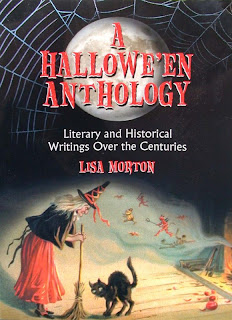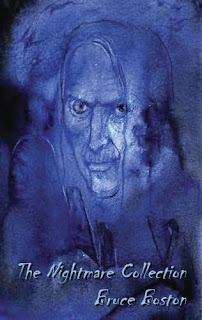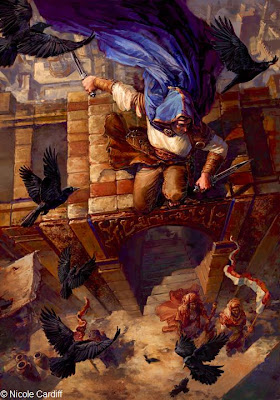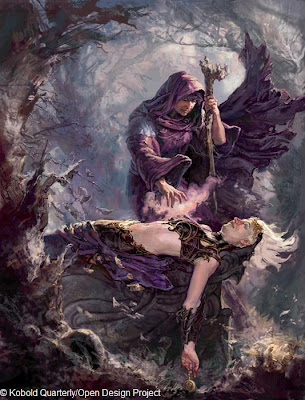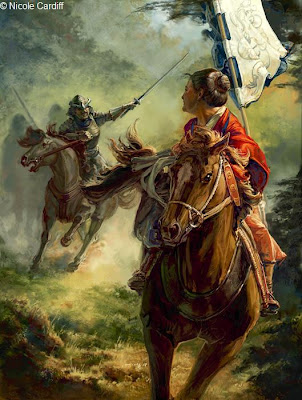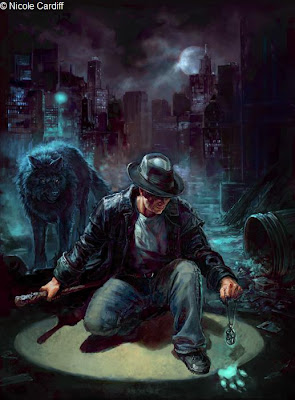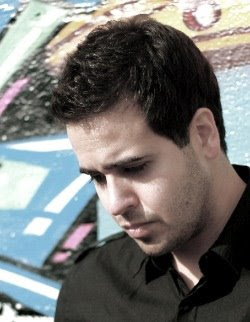
Mark Charan Newton made his debut in 2008 with the fantasy novel
"The Reef", published by
Pendragon Press. This year, on 5th of June,
TOR UK published his second novel,
"Nights of Villjamur", the first one in his fantasy series,
"Legends of the Red Sun". I recently read and
review "Nights of Villjamur", a novel that I enjoyed a lot, and now I had the chance to make an interview with
Mark Charan Newton.
 Dark Wolf: Mark, thank you very much for the opportunity of this interview.
Dark Wolf: Mark, thank you very much for the opportunity of this interview.Every child has a dream about his adult life field of work. Did you dream of becoming a writer? How did your love affair with the speculative fiction start?
Mark Charan Newton: Actually I had no idea I wanted to write until a few years ago, and I came reasonably late to the genre compared to many. I read the odd fantasy novel in my teens, but at the time was more interested in mainstream fiction. I really buried myself in SFF after I began working in a bookstore, and then I devoured book after book…
Dark Wolf: You have a great passion for music too. Does your passion for music and books influence each other? Does the music play a role on your writing?
Mark Charan Newton: Not so much an influence – when I read, I can’t listen to anything in the background. But when I write, I definitely get some energy from whatever I’m listening to at the time. I like to listen to other things during the re-writes though, to make sure that the mood from a scene wasn’t only in my head because of the music. Essentially, they’re different passions, but both major ones.
Dark Wolf: You have a degree in Environmental Science, but you work as an assistant editor for Solaris Books. How did this come to happen? What involves the work in a publishing house such as Solaris Books?
Mark Charan Newton: I haven’t worked as editor for Solaris for some time – I work for the Black Library, behind the scenes there, which is huge fun. I ended up in publishing via the now redundant Black Flame imprint (media tie-ins), but again before that, as I mentioned earlier, I worked in bookselling. I was actually scheduled to start a Masters Degree, and had dreams of becoming an ethnobotanist, believe it or not, but ended up loving the book industry so much, I never left.
DW: Did your experience in the publishing industry help you on your writings? How about the other way around?
MCN: I don’t think it could ever help my writing in terms of technique, but I certainly realised the realities of publishing pretty quickly, the things that do and don’t matter in the wider picture. You’d be surprised how much cover art can make a book successful.
If anything, I was reading so much at work, it made reading and writing at home more difficult. There were too many words in a day!
DW: Your novels were published by different publishing houses. If they were published by Solaris Books would it have been a conflict of interests? Did you try to send one of your manuscripts to Solaris Books?
MCN: Never. That’s vanity-publishing, for which I have no respect. It was never a consideration – and beside, my agent has full control over where the manuscript was sent. I’m aware that nepotism exists within any industry, but earned my rejection slips like every other writer, went through the frustrations, and did things the honourable way. I would not have felt it an achievement in any other way.
And it’s not so much a case of choosing a publishing house; they choose you, and I’m now very much bound to Pan Macmillan for all my novels.
DW: You made your debut with the fantasy stand-alone novel “The Reef” published by an independent publisher, Pendragon Press. For those unfamiliar with this novel can you tell them something about it?
MCN: I’m not all that keen on discussing this book simply because it’s unavailable now – few people can ever read it! It was a very low print run book, just a few hundred printed. But essentially it was a tropical island fantasy, inspired by writers such as Hemingway. It’s not connected to “Nights of Villjamur”, although it shares one of the races.
DW: How was your debut novel received? Would you try in the future to bring it to a wider audience?
MCN: There was understandably a much quieter reaction to the hubbub now. But no, I’m not so sure, I wrote it a few years ago, and I’m focused totally on the new series.
DW: For those familiar with the on-line fantasy community you are a known presence. Your second novel “Nights of Villjamur” produced a hype around the same community. Did your constant presence in the fantasy blogging community help you get the word out about your novel more easily? How important is this community for a new author or a new novel release?
MCN: I wasn’t aware I had much of a presence! I chip in online because I’m a fan, and still do, but there’s no way anyone can really engineer a reaction. I’ve been in contact with bloggers before, but reviewers can contact me just as easily through my website – I suppose one thing is that I’ve made myself available. Generally people have approached me about it; this was a conscious decision, because forcing your work on anyone is just not cool.
In terms of getting the word out – you know, there’s really very little an author can do. It’s a fairly democratic network online and I’ve been very, very lucky. I read the reaction, but don’t want to get involved – that way lies madness, so I’ll watch from a safe distance!
The vast community that has sprung up online over the last couple of years is hugely important to the genre: bloggers and new reviewers expressing their opinion takes away influence from the few sites and magazines who once could control the debate. Now readers have more control over things. It’s more democratic, so that can only be a good thing, right?
 DW: What was the initial idea that sparked the process of writing
DW: What was the initial idea that sparked the process of writing “Nights of Villjamur”
?MCN: A few things – I was already in the middle of a project which could be described as New Weird – but came to a realization that writing consciously in such a movement would never succeed, since none of the major editors wanted anything to do with consciously New Weird fiction. So I looked to change the aesthetics to something the majors would be interested in, without compromising what I write.
And also, the initial gem of the ice age sparked from a little known British SF book called “Hello Summer, Goodbye” by Michael Coney. I won’t ruin it for those who might yet discover it though – but seriously, track down some of Coney’s novels from second-hand bookshops, since they’re great reads.
So those were really the main starting points, but I constantly revise ideas throughout, so that I’m never really conscious the process at the beginning.
DW: Both “The Reef” and “Nights of Villjamur” are based on island or archipelago settings. Does the fact that your country is an island played a role in the creation of these settings? What other real aspects of your life find their way into your fiction?
MCN: That’s a good point. I don’t think it was ever a conscious link for either. In the first instance, I thought that islands were great for forcing together a group of disparate people in a small space, and letting their conflicts rise up out of it.
As for real aspects: I think there’s a lot that goes into all characters to an extent, and the world is drawn from the hundreds of observations – conscious and subconscious – of the real world. There are very few examples of specific real situations I’ve put in the book – none I want to mention! :)
DW: Also both of your novels are inhabited by many fantastical creatures. Two of these creatures from the “Nights of Villjamur” lead me to think of previous works of fiction, garuda at the China Miéville’s “New Crobuzon” novels and Jurro the Dawnir at the Robert Jordan’s “Wheel of Time”. Are these presences a tribute brought to these authors and their works? Did you bring other tributes to the works you love in your novels?
MCN: Although the garudas are indeed in the New Crobuzon novels, I actually took them from Borges’ famous “Book of Imaginary Beings” – I think one or two people have cunningly spotted this connection; I’ve always had it to hand when I need inspiration for a race.
Bestiaries are great – because there are so many more creatures out there than elves and dwarves (not that there’s anything wrong with them). Others deserve the spotlight too.
So the creatures not so much a tribute explicitly, although I’ve certainly paid homage to other authors in other ways – for example, there are several references to dying earth genre books throughout the novel, though few people have spotted them yet!
And I must confess, although I read the first few “Wheel of Time” books, they’re not especially an influence in terms of races… Sorry!
DW: Speaking of China Miéville, many people compared you with him. How does this comparison makes you feel?
MCN: That’s ridiculous, I have much more hair than China.
China’s books have been an inspiration to me, and it’s an honour if people do see some vague connections. People like to make comparisions with all sorts and that’s fine – that’s part of the dissection of SFF works, the business of genre taxonomy. I’m equally inspired by a number of writers, and I’m consciously a mish-mash of other styles and worlds in my head.
But I hope I’m carving a distinctive niche for myself.
DW: “Nights of Villjamur” is the first novel in the “Legends of the Red Sun”. How many novels will have your first fantasy series? Do you already have a precise ending in mind for your series or these part remains to be settled?
MCN: I see an initial four novels to tell the main story arc, though I’ve a history into which I can dig for more should I need to. I do have a rough ending, and know where the series is going, though I don’t like to pin myself down too much.
DW: Is the second novel of the series ready or are you still working on it? Can you reveal something about the second novel of the “Legends of the Red Sun” series?
MCN: I’ve finished the draft of the second novel, and while I don’t like to comment on it too much – because so much can change during the editing process – I like to think the series has gone darker, more grungy, and certainly weirder. Don’t expect a clone of the first novel – now I’ve got the publishing deal I feel I can be less conservative in my ambitions! (Evil laughter…)
DW: It seems lately that many fantasy authors confront themselves with a problem (let’s name it this way). After starting their series they confront themselves with eagerly awaiting fans for the sequels and sometimes these fans become angry in their wait. Are you concerned that this might happen to you as well? Do you consider there is too much debate around these issues?
MCN: Hey, if I’ve a lot of fans waiting for another book, that’s not a bad situation to be in. But of course there’s going to be debate – that’s part of fandom and we should expect it. It’s not for me to say whether or not there is too much debate though – the internet decides the level of discission for itself. But I do agree with Neil Gaiman’s response to the George RR Martin fan. Even though the internet brings readers and authors together, some fail to see authors as people – with real lives that get in the way of things.
As for me, the second book is ready to be mailed to my editor, so I’m on track at the moment!
DW: What other future plans does Mark Charan Newton have?
MCN: At some point there’s a US release from Del Rey – I’m not certain as to the dates of that yet. I’m simply going to crack on with the writing for now – there’s a third book that needs to be written.
Thank you very much for your answers and amiability. It has been a pleasure.
And thank you for asking me!

 2. “Twelve” by Jasper Kent
2. “Twelve” by Jasper Kent 


